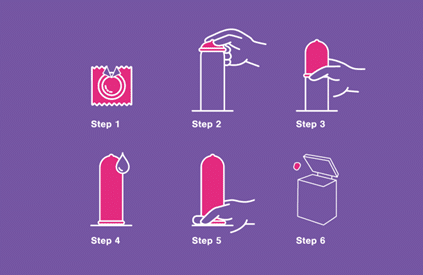Condoms are a barrier that prevents skin to skin contact and the transfer of body fluids. Condoms should be used every time you have sex. There are two types of condoms:
- male condoms (external condoms) which are worn on the outside of the penis
- female condoms (internal condoms) which are worn inside the vagina
Did you know that condoms can protect you from both unplanned pregnancy (for types of sex that can result in pregnancy) and sexually transmissible infections (STIs)?
When they’re used correctly, they’re over 98% effective but it’s easy to make mistakes that could result in condoms slipping, breaking, or coming off during sex.
To protect yourself and your partner from STIs it’s time to brush up on your condom skills and follow the dos and don’ts of how to use them. Getting to know how to use condoms is all part of looking after your sexual health and putting your health and wellbeing first.
How do I use a condom?

Using condoms correctly is important so that they keep you safe from STIs and unplanned pregnancy. Follow these steps to use a condom. It’s a good idea to practice, so you feel comfortable using them in the moment.
- Always check the expiry date of the condom
- Open the packet carefully so you don’t damage the condom
- Hold the tip of the condom to remove any air and roll it all the way down to the base of the erect penis
- Use water-based lubricant on the outside of the condom to reduce the risk of the condom breaking
- Hold onto the base when you remove the condom
- Throw away in the bin, not the toilet
Where can I get condoms from?
You can buy condoms from your local supermarket, chemists or pharmacies, convenience stores, petrol stations. They’re also available for free at Youth Health Centres, Sexual Health Clinics and some GPs. But if you’d prefer something more discrete or are looking for a bigger range, be sure to look online and get them delivered.
A lot of university campuses and some health services have condoms for free. If you’re under 30, you can even get condoms for free through Family Planning NSW’s Freedom Condom project. It’s a new service that makes it easy for young people to get free condoms across the state. Simply head to a clinic or service that displays the Freedom Condom posters and ask for your own Freedom Condom card.
What do I do if the condom breaks?
If you use condoms correctly, then the chance of them breaking is low. If a condom your using does break, don’t worry, following these steps.
- Stop what you’re doing
- Withdraw the penis
- Take off the broken condom
- Put another condom on
- If you both want to, keep having a good time
- Book an STI test for the following week and take emergency contraception if needed
It’s recommended that you get an STI test every 6-12 months, when you change partners, or if you show any symptoms.
Condoms: The ‘Dos’
- Do try out lots of different brands and styles of condoms to see what feels and fits best for you. Condoms come in different sizes, brands, textures, colours and flavours.
- Make sure you check the expiry date before you use a condom. Expired condoms have a higher chance of breaking.
- Be sure to put the condom on before the action starts.
- Use water-based lube to reduce the chance of the condom breaking and to make sex feel even better. You can put lube on the outside of a condom and a small drop on the inside to increase pleasure.
- Try out flavoured condoms for oral sex (yes, you’re at risk of STIs during oral sex too).
- Put a new condom on each time you switch between oral, vaginal and anal sex.
Bonus tip: If you’re sharing sex toys (such as vibrators or dildos) it’s a good idea to use condoms on these too, as sexual fluids and STIs can easily be transmitted between partners.
Condoms: The ‘Don’ts’
- Never open the condom packet with your teeth or scissors. This might tear the condom and a torn condom won’t protect you from STIs or unplanned pregnancy.
- Don’t keep condoms in hot places or in your wallet. Heat and friction can damage the condom.
- Never use more than one condom at a time. More condoms doesn’t mean more protection.
- Don’t use oil-based products (moisturisers, body lotions, cooking oils and Vaseline etc.) as lube as they’ll damage the condom.
- Don’t flush used condoms down the toilet. Instead, tie a knot in the end to stop anything spilling out, wrap it in tissue paper and dispose of it in the bin.
- NEVER re-use a condom. Condoms can only be used once, so when you’re finished using it, take it off, wrap it up and throw it away in the bin.
Do you have questions about condoms or sexual health? Ask our Sexual Health Nurse today!


